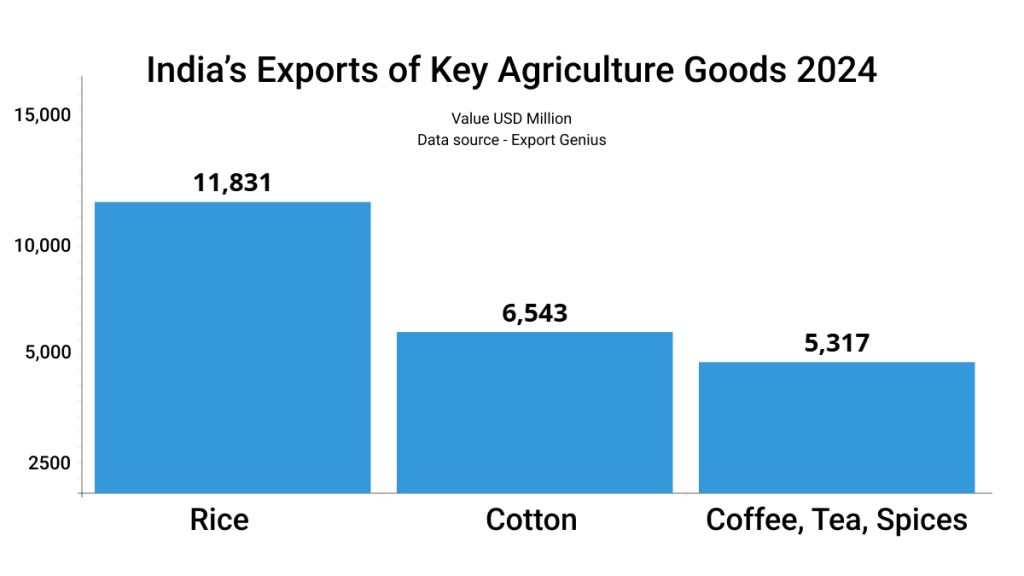In India, the monsoon is more than just a weather phenomenon—it’s an economic booster. Each year, the arrival of the southwest monsoon signals hope for millions of farmers, energizes rural demand, and sets the tone for key sectors of the economy. With over 50% of India’s agricultural land dependent on rainfall, a strong monsoon can mean bountiful harvests, increased income for farmers, and a ripple effect that boosts manufacturing, consumption, and exports.
From lush paddy fields in Punjab to spice plantations in Kerala, the agricultural bounty fueled by monsoon rains forms the backbone of India’s export economy. Commodities like rice, tea, cotton, and spices see surges in production during good monsoon years, enhancing India’s trade position globally. As climate variability increases, understanding the monsoon’s role in economic stability and export performance becomes more crucial than ever.
The monsoon plays a crucial role in the Indian economy due to its deep interconnection with agriculture, industry, rural livelihoods, and overall economic growth. Here’s a detailed overview of its role:
Agricultural Backbone
Agriculture depends heavily on monsoon rains as around 60% of India’s cultivated land is rain-fed (without irrigation). A good monsoon ensures sufficient soil moisture for sowing and growth of key crops like rice, wheat, pulses, cotton, and sugarcane.
Since agriculture contributes about 18-20% of India’s GDP and employs nearly half the workforce, monsoon performance directly influences overall economic health. Poor monsoon can lead to droughts, crop failures, lower yields, and food shortages.
Impact on Rural Economy and Livelihoods
The rural economy is largely dependent on agriculture and related activities. A strong monsoon boosts rural income, improving demand for consumer goods, fertilizers, farm equipment, and credit. Conversely, weak monsoon seasons lead to distress, unemployment, and migration to cities, affecting consumption patterns and social stability.
Industrial and Manufacturing Output
Many industries (like textiles, sugar, food processing) depend on agricultural raw materials, which are affected by monsoon.
Good monsoon → higher availability of raw materials → stable industrial output and exports.
Poor monsoon → raw material shortages → reduced manufacturing output.
Inflation and Food Prices
Agriculture influences food supply and prices.
Good monsoon → adequate food production → stabilizes or lowers food inflation.
Poor monsoon → scarcity of food grains and vegetables → spikes in food inflation, which can impact overall inflation and monetary policy.
Government Finances and Policy
Monsoon affects tax revenues (through agricultural income tax, GST from consumption).
Crop failures lead to higher government spending on subsidies, relief packages, and minimum support prices (MSP).
Monsoon variability affects planning and implementation of rural development programs.
Trade and Balance of Payments
India exports several agricultural products (tea, spices, rice, cotton) whose supply depends on monsoon.

| Product | Value USD Million |
| Rice | 11,831 |
| Cotton | 6,543 |
| Coffee, Tea, Spices | 5,317 |
Poor monsoon reduces exports, potentially increasing imports of food items, impacting the trade balance.
Monsoon also influences commodity prices in global markets, affecting India’s trade terms.
Financial Markets and Investment
Monsoon outlook impacts investor sentiment, especially in sectors like FMCG, agriculture, rural banking, and fertilizers.
Banks’ agricultural loan portfolios are sensitive to monsoon performance, influencing credit growth and NPAs (non-performing assets).
In essence, the monsoon is like the lifeblood of the Indian economy — its timely arrival and adequate rainfall can stimulate growth and stability, while its failure can cause economic distress and slow down growth.
The Bottom Line
The monsoon remains a cornerstone of India’s economic framework—nurturing crops, sustaining livelihoods, and energizing the nation’s export potential. A timely and well-distributed monsoon can spur rural demand, stabilize food prices, and enhance the global competitiveness of Indian agricultural exports. Conversely, a weak or erratic monsoon can disrupt supply chains, depress farmer incomes, and strain the broader economy.
As India advances toward greater economic resilience, reducing overdependence on monsoonal patterns through irrigation reform, technology adoption, and climate-smart agriculture will be key. Yet, the monsoon will continue to play a vital role in connecting the fields of rural India to international markets—turning seasonal rainfall into a global economic opportunity.






















